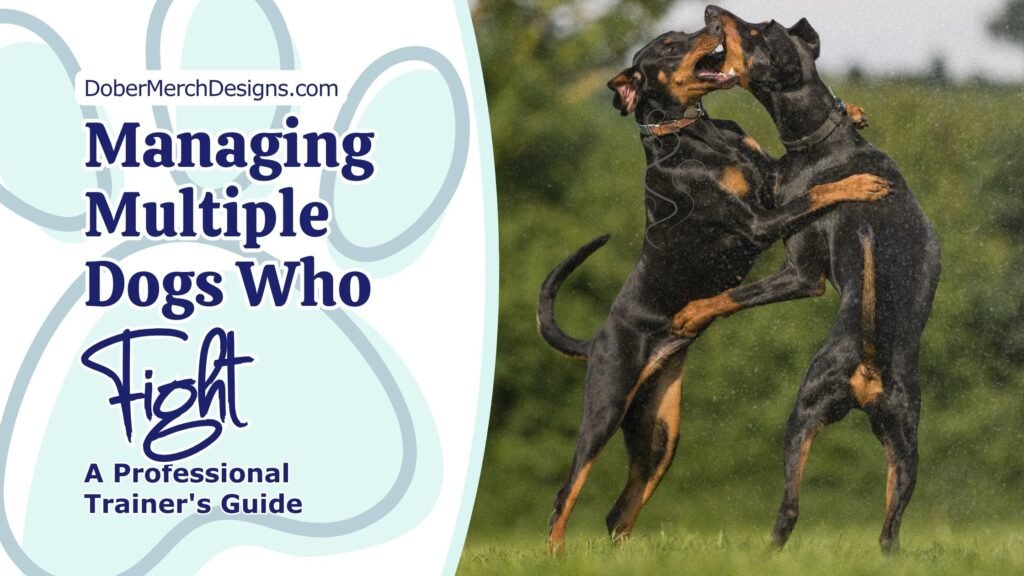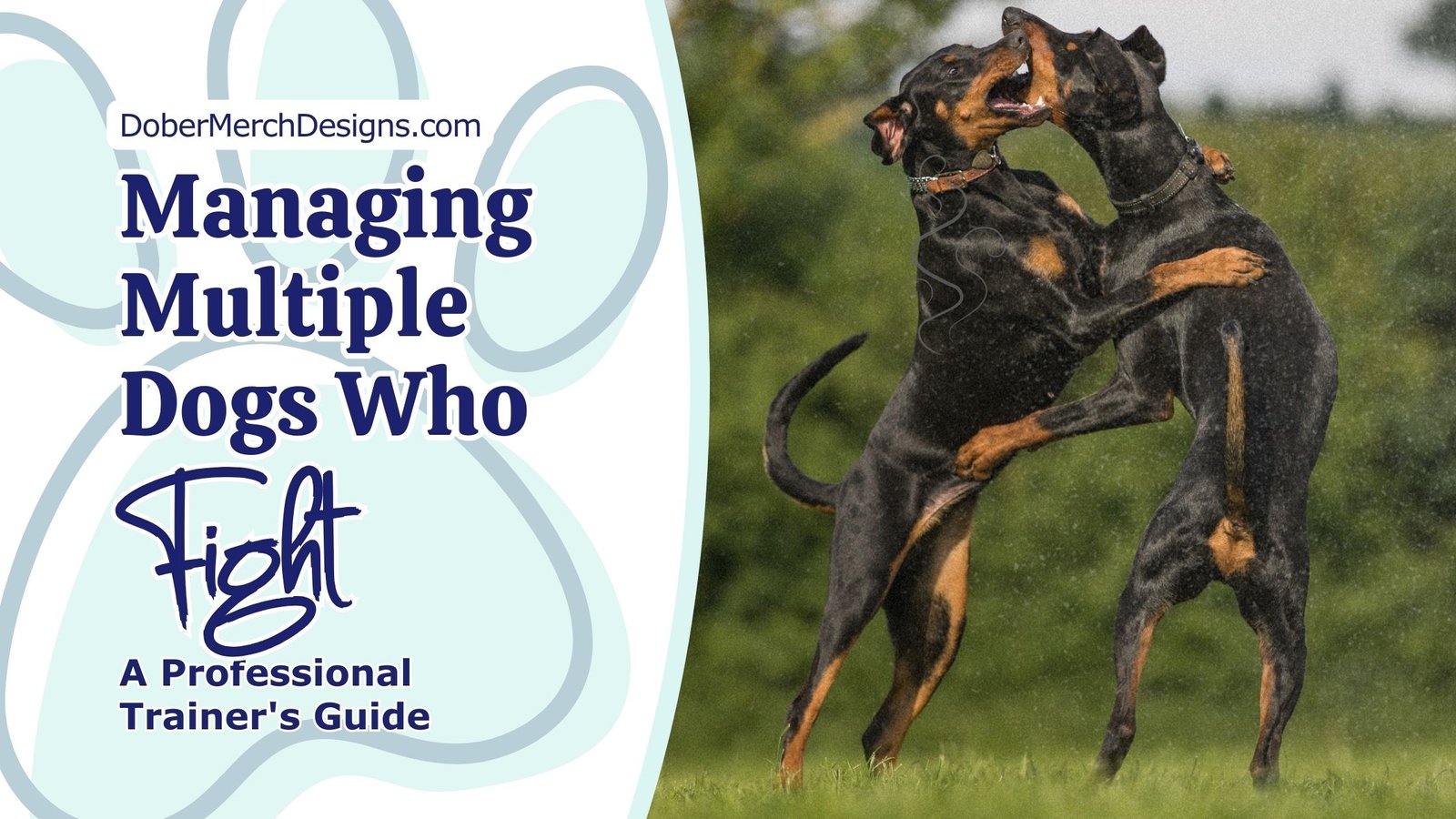As a professional dog trainer specializing in aggressive and challenging dogs, I’ve helped countless families restore peace in their multi-dog households. Having personally owned multiple Dobermans, including two with behavioral issues, I understand both the professional and personal sides of this challenge. Here’s your comprehensive guide to managing dogs who fight.

The Reality of Dog-Dog Aggression
Before diving into solutions, let’s be clear: managing multiple dogs who fight is demanding work that requires commitment and consistency. While the situation can improve dramatically with proper management, you must remain vigilant and prepared to maintain these strategies long-term.
Immediate Safety Measures
1. Implement Crate Training and Rotation
- Begin crate training immediately if not already done
- Establish a strict “crate and rotate” schedule
- Allow only one dog out at a time initially
- Ensure each dog has their own designated safe space
- Make crates positive spaces with comfortable bedding and appropriate toys
2. Master the “Place” Command
Your dog’s “place” should become their station where they can relax and decompress. This command is crucial for:
- Creating physical and mental boundaries
- Reducing tension between dogs
- Building impulse control
- Managing transitions (before/after walks, meals, visitors)
Pro Tip: Start with 2-hour “place” sessions for each dog individually. Maintain place command for 30 minutes before and after any outdoor activities.
3. The “Sit on the Dog” Exercise
This powerful behavioral exercise helps:
- Establish leadership
- Reduce anxiety
- Build focus and self-control
- Create a stronger bond between dog and handler
You can perform this exercise:
- With one dog while others are crated
- With multiple dogs on “place”
- Individually during rotation periods
Progressive Integration Strategies
1. Structured Walks
- Begin with parallel walks at a safe distance
- Gradually decrease distance as dogs show calm behavior
- Maintain structure with:
- No greeting between dogs
- No sniffing without permission
- Focused walking with handlers
2. Professional Support
Working with a balanced trainer is crucial because they:
- Provide personalized strategies for your specific situation
- Teach proper timing and technique
- Help identify trigger patterns
- Guide you through safe integration protocols
Long-Term Management Tips
1. Environmental Management
- Remove trigger items (toys, food bowls, high-value items)
- Create separate feeding stations
- Establish clear boundaries in common areas
- Use baby gates or other barriers strategically
2. Recognition of Warning Signs
Learn to identify:
- Subtle body language cues
- Trigger situations
- Individual stress signals
- Early conflict indicators
3. Building Positive Associations
- Controlled parallel activities
- Structured group training sessions
- Shared positive experiences at safe distances
- Gradual proximity exercises
When to Seek Additional Help
Contact a professional trainer immediately if:
- Fighting intensifies despite management
- You feel unsafe handling the situation
- Dogs show increasing stress or anxiety
- Current strategies aren’t producing results
Daily Management Schedule Example
Morning:
- Dog A: Out for morning routine while Dog B is crated
- Switch: Dog B out while Dog A on place
- Structured walk (if progressed to this stage)
- Place command for both (separated)
Afternoon:
- Rotation of “sit on the dog” sessions
- Individual training sessions
- Separate enrichment activities
Evening:
- Repeat morning rotation
- Structured decompression time
- Secure separation for sleeping
Your Next Steps
- Start implementing these strategies today
- Document behaviors and progress
- Create a consistent schedule
- Download our Aggression Management Kit for additional resources
Download Your Free Aggression Management Kit
Remember: Managing multiple dogs who fight requires patience, consistency, and commitment. While it may feel overwhelming initially, with the right approach and support, many dogs can learn to coexist peacefully.
About the Author: Ineke has been a dog trainer for over 10 years. She helps dog owners work with dogs that may be aggressive, stubborn, or just a little bratty, so they can live peacefully with their pets without added stress or worry. With experience working with over 1,000 dogs, Ineke has tackled a wide range of behavioral issues, from moderate to severe.
Discover more from DoberMerchDesigns
Subscribe to get the latest posts sent to your email.


Leave a Reply